The range of available activities in Dry Tortugas National Park depends largely on how long you intend to stay. A day trip to the remote islands will result in an extremely limited amount of time and will only provide the ability to explore Fort Jefferson, a quick snorkel or perhaps a stroll around Garden Key. A camping trip to the islands will allow for a much broader range of options.
Here are some of Park Junkie’s favorite activities in Dry Tortugas.
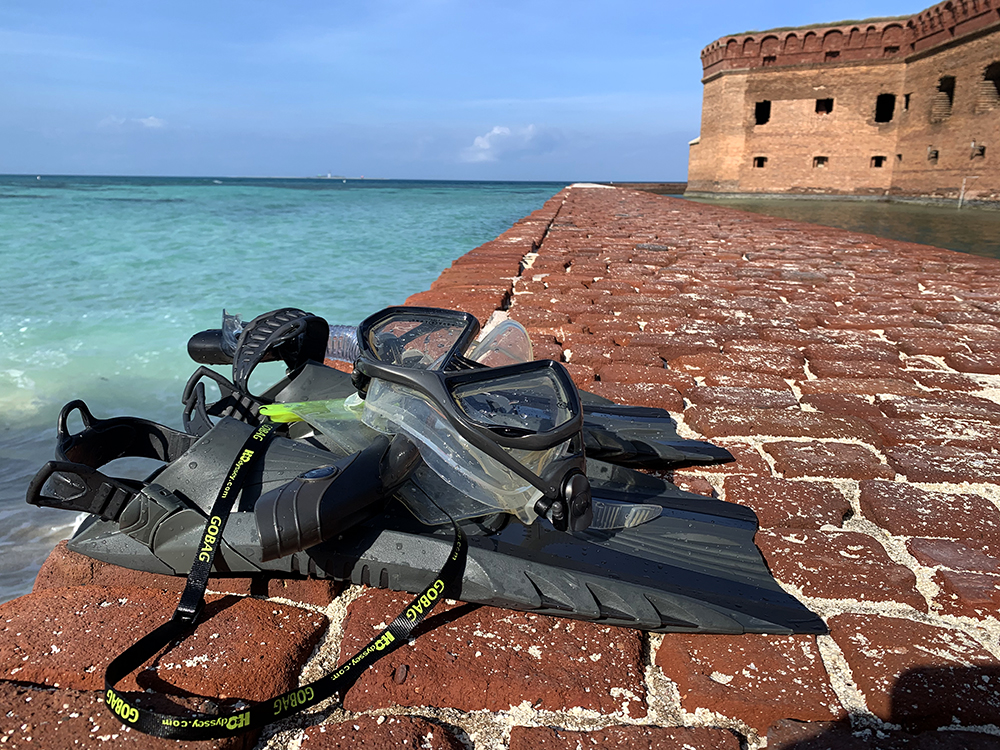
Guide to Dry Tortugas
Snorkeling at Garden Key
Of the 65,000 acres covered by the park, more than 99% is underwater. So you’ll want to be ready to take to the sea before you visit.
For those arriving by sea on the Yankee Freedom III or by air with Key West Seaplane Adventures, snorkeling gear is provided. Personally, I prefer my own gear, which is permitted as well. So you can either bring your own, or use that provided by your transportation provider.
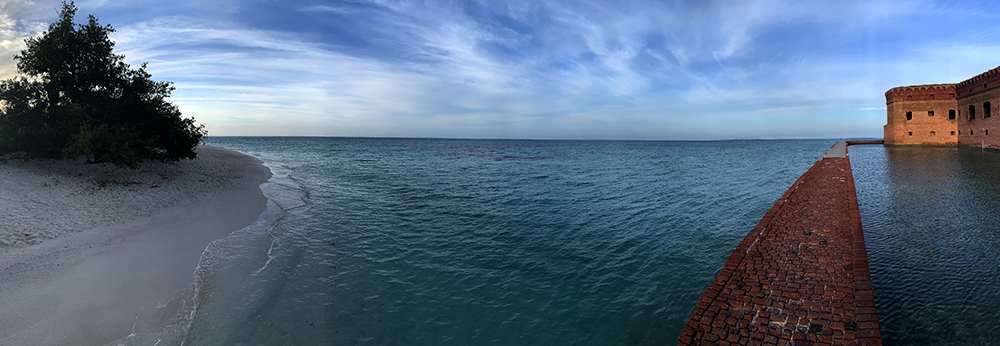
The action begins in the waters that surround Fort Jefferson. Visitors can just wade into the warm, shallow water and take off on a magical tour around the fort wall in a designated snorkel zone. Boats and personal watercraft are prohibited in this area in order to protect snorkelers and swimmers.
This area features a maze of turtle grass and coral, with schools of fish that congregate at different points along the moat wall. Coral reefs account for a fraction of the underwater environment, yet they provide a protective habitat for the park’s diverse population of fish and sea creatures.
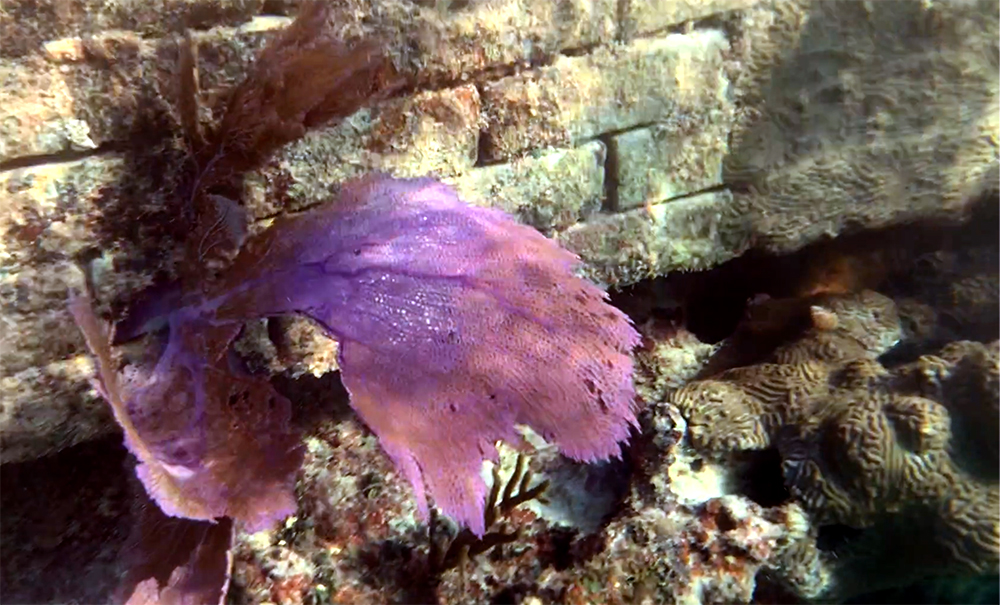
Snorkelers at Garden Key have options. Both the North and South coaling docks offer a fabulous opportunity to swim through rich patches of coral and the fish viewing is spectacular in the ruins.
However, snorkelers in these areas must constantly maintain awareness of their location in relation to the barnacle-covered pilings through which they are swimming. Barnacles and human skin do not react well to one another… the barnacles win.
Snorkeling at Loggerhead Key
Another wonderful area to strap on ye ol’ snorkel and fins is on the western shore of Loggerhead Key. Those who brought their kayak on the journey to the Dry Tortugas can access this remote key, which lies 3 miles to the west of Garden Key.
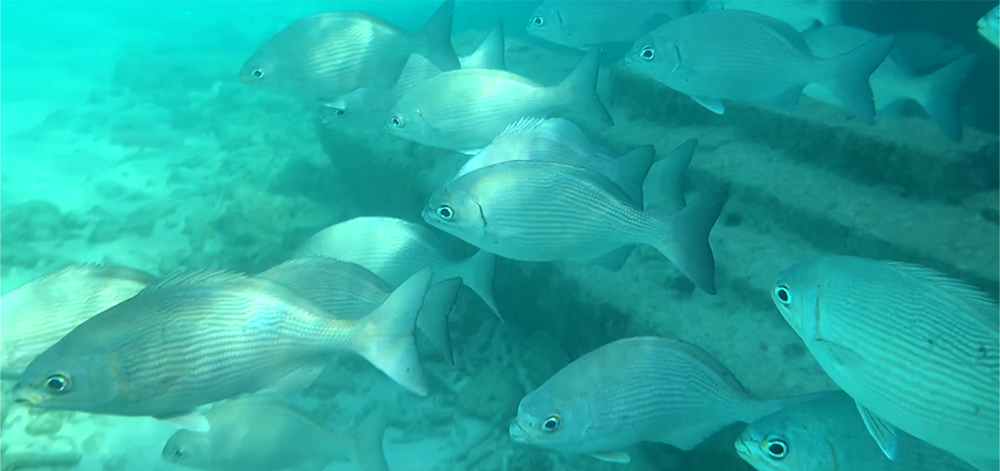
This is an open water crossing, that should not be taken lightly by even experienced open water kayakers. Life vests are necessary in addition to self rescue skills, and a radio with access to channel 16 (U.S. Coast Guard monitored) should be kept on board and in good working condition.
Have a plan ready should disaster strike. You’re in deep open water on this crossing. Don’t underestimate it. Boating permits must be filed at Garden Key prior to accessing Loggerhead Key. Talk to a ranger at the fort upon arrival to assess current conditions and to get a permit.
The Little Africa Reef is just offshore on the western side of the island. The shape of the reef resembles the African continent when viewed from the sky, thus the name. This is a larger field of coral than that found at Garden Key, and wildlife sightings here usually involve large grouper or even dolphin and shark.
Kayaking in the Dry Tortugas
You’ll never regret bringing a kayak to the Dry Tortugas. If you’re camping for a couple of nights, a kayak really opens up your daytime activity options. Sunbathing is cool, but only a few minutes of this activity are necessary for the Park Junkie, and likewise, I can only snorkel for so long. So, the kayak provides a nice getaway.
The Yankee Freedom III will transport your kayak from Key West to Garden Key and back for a nominal charge. However, there are a limited number of spots on each passage, and you’ll want to reserve your kayak’s place on the boat a few months in advance, the same applies for camping. See the visiting page for more information on the Yankee Freedom, or check out their website.
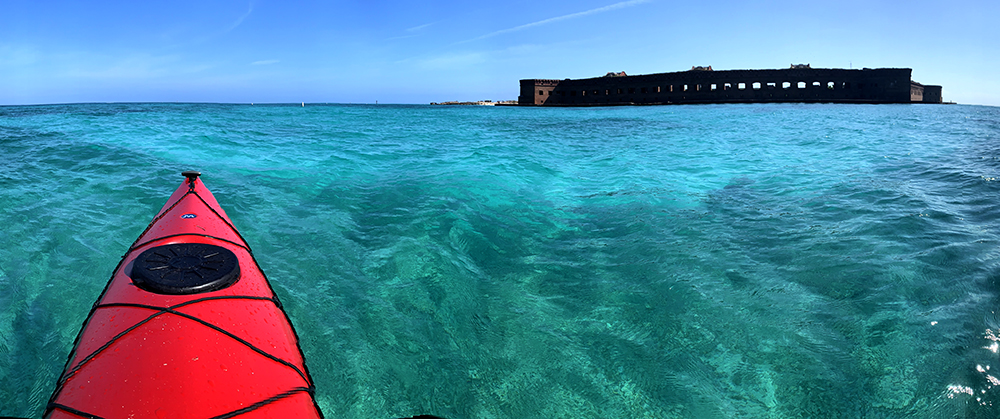
Paddling provides a unique opportunity to explore the Dry Tortugas on your own schedule. Crystal clear turquoise waters give a near-perfect view of what is going on below the water’s surface. Observant kayakers can watch creatures stirring below the boat, and birds soaring above the waters.
Bush Key and Long Key are popular areas to paddle and allow the view of a variety of wildlife. These islands are close to Fort Jefferson and offer the opportunity for a quick paddle, which features nesting birds, depending upon the time of year.
Kayaking to Loggerhead Key
For those who lust for a bit more adventure, the paddle to Loggerhead Key beckons. This island sits three miles to the west of Garden Key, and features a 152-foot-tall lighthouse which draws the attention of those looking westward from Fort Jefferson.
This is an open water crossing, that should not be taken lightly by inexperienced kayakers. Life vests are necessary and a radio with access to vhf channel 16 (U.S. Coast Guard monitored) should be kept on board and in working condition.

Have a plan ready should disaster strike. You’re in deep open water on this crossing. Don’t underestimate it. Boating permits must be filed at Garden Key prior to accessing Loggerhead Key. Talk to a ranger at the fort upon arrival to assess current conditions and to get a permit. If you are planning a trip to Loggerhead Key, it must be listed on your permit.
While at Loggerhead Key, take a stroll on the provided pathways and check out the lighthouse. The island’s only resident is a volunteer ranger who looks after the lighthouse. Stroll over that way, and you may meet this ranger. Be polite, you’re at their home. Usually this ranger will happily answer any of the questions you may have about the lighthouse and the island.
Just off the west shore of Loggerhead is the Little Africa Reef, which provides some of the best snorkeling in the park.
Touring Fort Jefferson
Fort Jefferson is the centerpiece of the park and you’ll definitely want to take a tour of the grounds. Daily tours are available and are given by one of the crew from the Yankee Freedom. This tour usually meets at the fort’s entrance just a few minutes after the ferry’s arrival on the island.
I took a tour given by a guide named “Hollywood”, who was quite knowledgeable about the fort’s history and I enjoyed his demeanor. The stories surrounding the Civil War history were incredible and the discussion of wildlife around the fort was most informative.
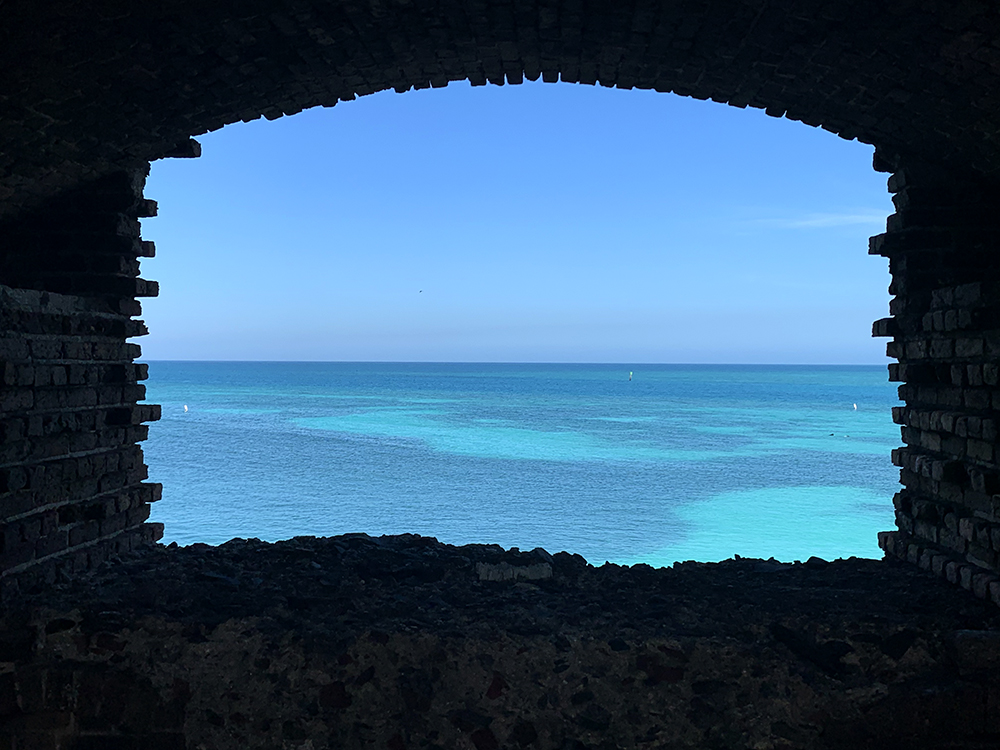
Of course, you don’t have to take the organized tour. The fort is open from sunrise to sunset, and guests are welcome to wander the grounds at their leisure during these hours. The fort has three levels and photographic opportunities are incredible from the dilapidated windows looking out into the turquoise waters below.
The fort includes a small visitor center and a gift shop, which you won’t want to miss. It should also be noted that certain areas on the southwestern corner of the fort act as housing for the staff who work here and are off limits to guests.
Fishing at Dry Tortugas
Those who hold a current Florida saltwater fishing license can take the opportunity to try their luck with a rod and reel in the park. That said, regulations are in place and you’ll want to ensure that you’re aware of these before fishing in the park’s waters.
There are few areas in the park that do allow fishing, but campers can enjoy a fresh meal if they take advantage of the areas on Garden Key where this practice is permitted.
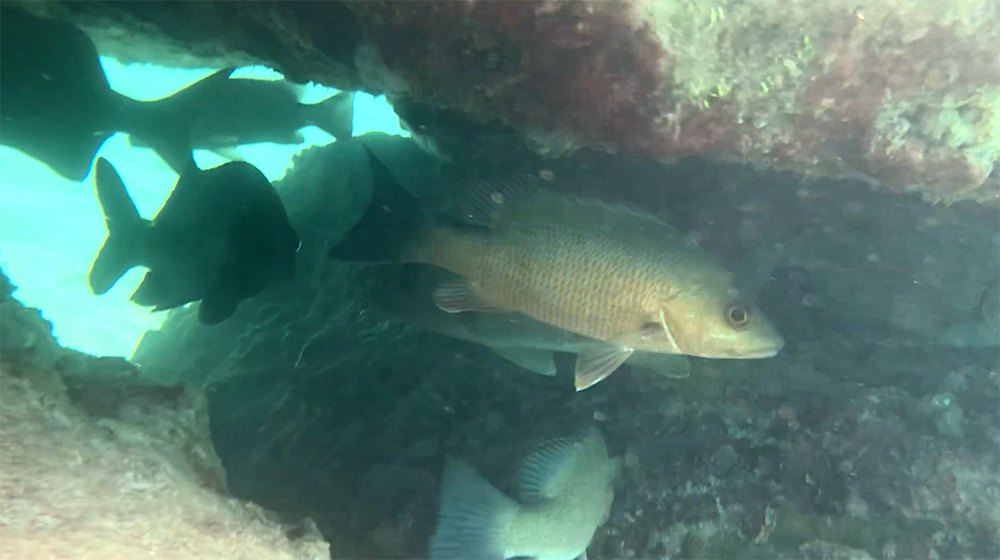
Fishing is allowed from the main dock during hours when the Yankee Freedom is not there. Likewise, the seaplane beach is open when seaplanes are not present. The dingy beach and the westernmost piers allow fishing as well.
Boaters must check in and obtain a boat permit on Garden Key prior to casting into park waters, and should also understand that available grounds for fishing within the park boundaries are extremely limited. Fishing from watercraft is only permitted within a one mile Historic Use area of Garden Key.
You can read more about fishing at Dry Tortugas on the park website’s fishing page.
Scuba Diving at Dry Tortugas
For those into diving, the waters of the park hold the richest and healthiest coral reef system in the Caribbean, including the Sherwood Forest, which features a canopy of mushroom-shaped formations.
More than 400 species of fish are present in the park, including barracuda, Goliath grouper, hammerhead shark, nurse sharks and dolphin. Diving provides a perfect gateway into their community.
Dry Tortugas is home to more than 250 documented shipwrecks that have occurred over the past 500 years. While many of these have been salvaged and removed, a number of vessels still remain that offer incredible diving opportunities in warm, shallow water for those with private watercraft and diving gear.
The park does not offer any access to SCUBA activities, but there are several charter companies out of Key West that provide access to a number of the park’s wrecks.
The Windjammer wreck, also known as the Avanti, was a 261 foot, iron-hulled sailing vessel which ran aground in 1907. It is an amazingly preserved wreck which houses a large population of colorful reef fish, along with larger fish such as barracuda, tarpon and grouper. Its depth of 20 feet makes it a great diving option, and the park’s most popular.
Another well-preserved option is the Bird Key brick wreck, which rests below a mere 8 feet of water, which makes it available to experienced snorkelers as well. This 100 foot vessel lies within a mile of the fort, and although partially salvaged, remains an interesting dive thanks to its convenient location and depth.
For more information on diving in the Dry Tortugas, see the Florida Keys Vacation website and check out the visiting page for a list of charter companies authorized to conduct dives within the park.
Birding at Dry Tortugas
More than 300 species of birds have been identified within the park and many migratory species are the delight of the vast numbers of “birders” that come to the park seeking a pit-stop on their journey from South and Central America to the United States.
Of these 300 species, only 7 nest here regularly, including the magnificent frigate birds, along with brown and black noddies and masked and brown boobies.
One of the most common scenes in the skies of Dry Tortugas is the throngs of magnificent frigate birds that hover above Fort Jefferson. These birds have a wingspan of up to seven feet, and are awesome to watch in flight.
They acquire much of their food by harassing other birds, and forcing them to regurgitate their meals, which the frigate bird will then take for its own. A colony of frigate birds that nests on Long Key enjoys the only remaining nesting ground in the Untied States.
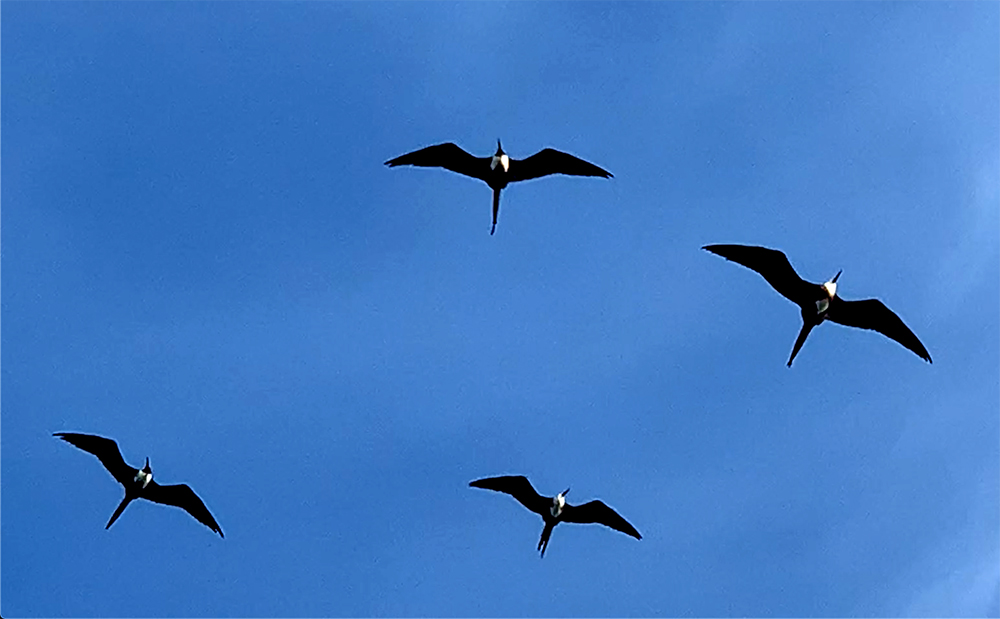
This place has long been a mecca for bird watchers and researchers. The famous naturalist, John James Audubon, visited in 1832 and was immediately struck by the number of sooty terns on the beach of Bird Key.
“On landing I felt for a moment as if the birds would raise me from the ground, so thick were they all around, and so quick the motion of their wings. Their cries were indeed deafening, yet not more that half of them took to wing on our arrival… We ran across the naked beach, and as we entered the thick cover before us, and spread in different directions, we might at every step have caught a sitting bird.”
John James Audubon
Other Activities
There is no limit to the available activities in Dry Tortugas National Park. Stargazing and night sky astrology interest some, while the park’s limited hiking, or should I say strolling paths offer an abundance of excitement for others.
For my next visit to Dry Tortugas, I may just sit on the moat wall and stare at the sea…
It’s just that gorgeous…
Guide to Dry Tortugas
Relevant Links
Yankee Freedom lll – Ferry Service
National Park Guides

All content found on Park Junkie is meant solely for entertainment purposes and is the copyrighted property of Park Junkie Productions. Unauthorized reproduction is prohibited without the express written consent of Park Junkie Productions.
YOU CAN DIE. Activities pursued within National Park boundaries hold inherent dangers. You are solely responsible for your safety in the outdoors. Park Junkie accepts no responsibility for actions that result in inconveniences, injury or death.
This site is not affiliated with the National Park Service, or any particular park.
